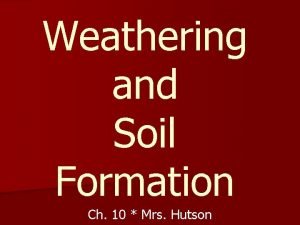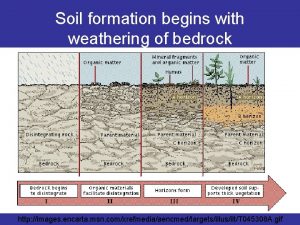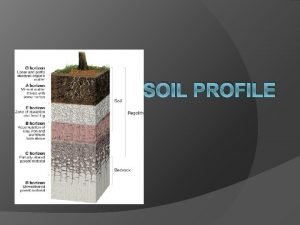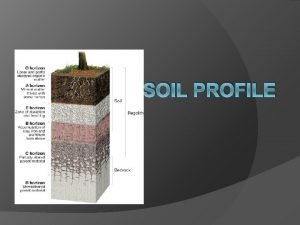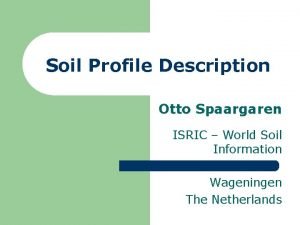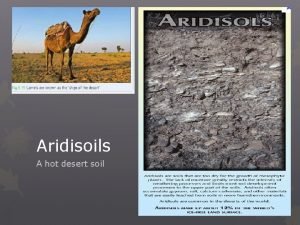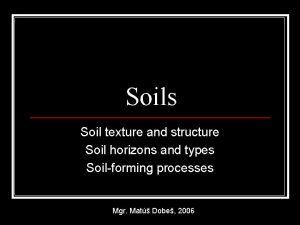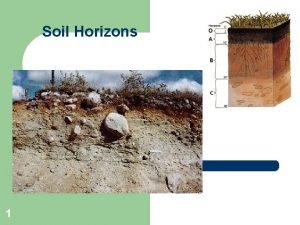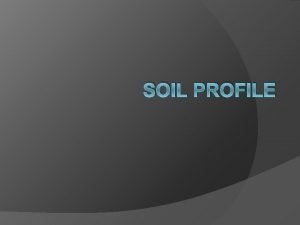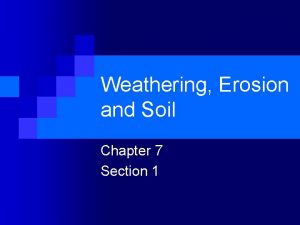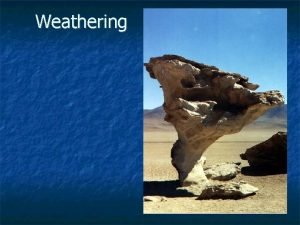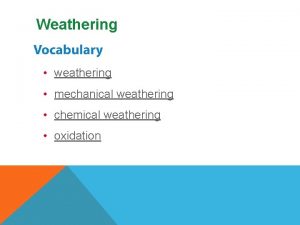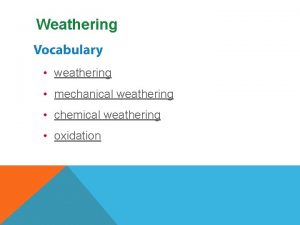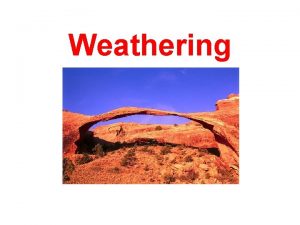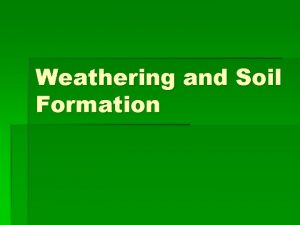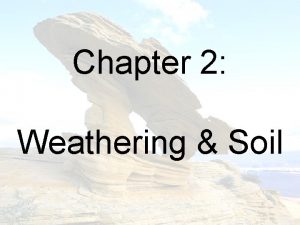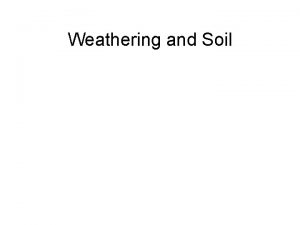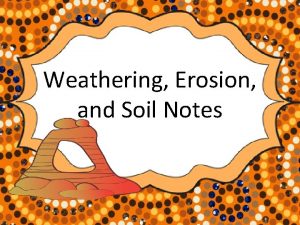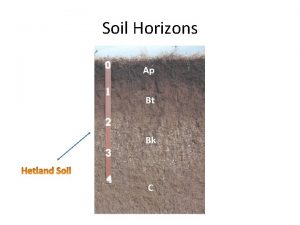Soil Formation Horizons Chapter 2 Weathering and Soil










- Slides: 10

Soil Formation & Horizons Chapter 2 - Weathering and Soil

What you need today: • Pencil • Bellringer sheet • Everything else on the counter.

Bellringer # 2 Wildflowers can bloom in all sorts of places, including the desert. Plants need many things to survive, including water and sunlight. But in the desert, as elsewhere, the composition of soil determines whether or not plants will grow. The plants shown here can grow in desert soil, but not on solid rock. 1. Describe the soil of a desert. How does it compare to the soil where you live? 2. Why is it difficult for most plants to grown on a solid rock? 3. Do you think that all plants could grow well in desert soil if you added water?

Today’s Objectives Students will be able to: • Identify evidence of chemical weathering. • Explain how chemical weathering changes rock. • Differentiate between chemical and mechanical weathering.

Formation of Soil- Parent Material • Why are there so many different types of soil? • The kinds of soils that form depend on five factors of soil formation. • The starting material of soil is called parent material. • Parent material is made of the rock or sediment that weathers and forms soil. • The particle size and type of parent material can determine the properties of the soil that develops.

Factors that Affect Soil Formation: Climate • The average weather of an area is its climate. • If the parent material is in a warm, wet climate, soil formation can be rapid.

Factors that Affect Soil Formation: Topography • Topography is the shape and steepness of the landscape. • The topography of an area determines what happens to water that reaches the soil surface. • Water running downhill can carry soil with it, leaving some slopes bare of soil.

Factors that Affect Soil Formation: Biota • Biota is all of the organisms that live in a region. • Biota in the soil help speed up the process of soil formation in various ways. • Organisms can be involved in decomposition of organic matter or form passages in soil for water to move through. • Rock and soil are affected by organism activity. • Mature soils develop layers as new soil forms on top of older soil.

Factors that Affect Soil Formation: Time • As time passes, weathering is constantly acting on rock and sediment. • This means soil formation is a(n) constant, but slow process

Horizons • Horizons are layers of soil formed from the movement of the products of weathering. • There are three horizons common to most soils. • Each horizon has characteristics based on the type of materials it contains. • The A-horizon is the part of the soil you are most likely to see when you dig a shallow hole; it contains most of the organic matter in the soil. • The B-horizon usually contains a great deal of clay particles. • The C-horizon consists of parent material. • The top, organic layer is called the O-horizon and the unweathered, bedrock layer is the R-horizon.
